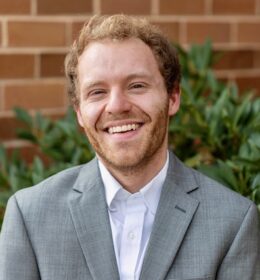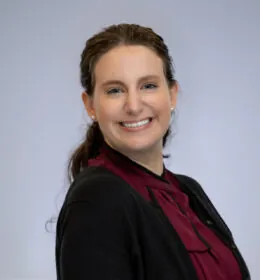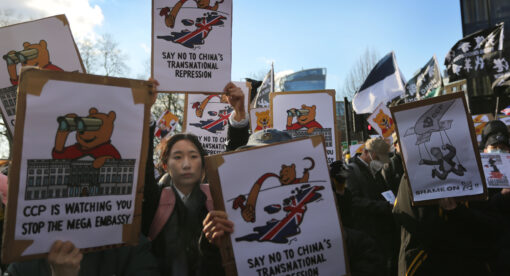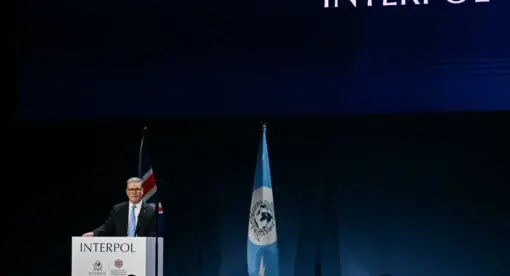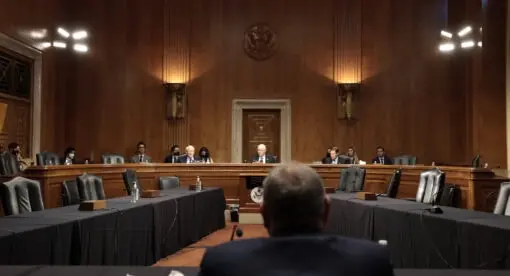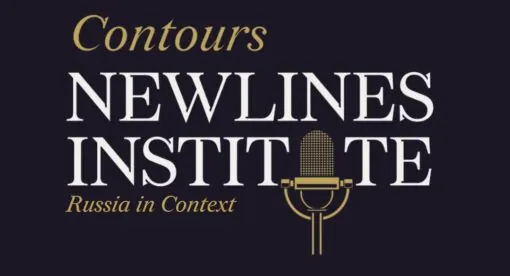In commemoration of the International Day to Protect Education from Attack, host Carolyn Moorman sits down with Save the Children’s Miriam Toure, the Global Coalition to Protect Education from Attack’s Jerome Marston, and New Lines’ Alexander Kochenburger. Their conversation examines emerging and persisting threats to education, including from non-state armed groups, and highlights best practices to safeguard education and children from these attacks.
Carolyn Moorman:
Hello, and welcome to the New Lines Institute for Strategy and Policy’s Contours Podcast. This is your host, Carolyn Moorman. In today’s episode of Contours, we’ll be commemorating the UN’s International Day to Protect Education From Attack. We’ll be discussing key themes, problem areas, and solutions with a group of experts from Save the Children, the Global Coalition to Protect Education from Attack, and New Lines.
Our first guest is Jerome Marston, who is a senior researcher at the Global Coalition to Protect Education from Attack, also known as GCPEA. He leads the research and production of the Education Under Attack Report series and works to strengthen monitoring and reporting of attacks on education globally. Jerome holds a PhD in political science from Brown University, where he researched forced displacement in Columbian cities, supported in part by a Fulbright-Hays grant. Jerome’s research appears in several academic journals as well as the op-ed pages of outlets like the New Humanitarian and El País.
Also joining us is Mariam Toure. She’s the humanitarian advocacy advisor on EiE, also known as Education in Emergencies, at Save the Children, for Central and West Africa. She holds an MA in International Studies and Diplomacy from the University of SOAS in London, and a license in private law. She has extensive experience working over the past couple of years in the development and humanitarian sectors in countries like Senegal and Mali, where she advocates for the rights of people affected by conflicts, including the right of children to education. Mariam also has a Bioforce certification in the design and management of humanitarian projects.
Our last guest is Alexander Kochenburger. Alexander is the analysis supervisor with the analytical development and training team at the New Lines Institute. His research focuses on the role of education reform and transitional justice in conflict transformation efforts. Before joining New Lines, Alex worked as a senior program assistant at Amideast, studied Arabic with the Center for Arabic Study Abroad program, and completed a Fulbright grant in Agadir, Morocco. He also interned with Search for a Common Ground’s program development team for the Middle East, North Africa and Asia.
This podcast will be published a couple of days after GCPEA released a groundbreaking report looking at attacks on education by non-state actors, called Non-State Armed Groups in Attacks on Education, exploring trends and practices to curb violations. So with that, I’d like to turn to Jerome to start, and have you go into what trends we’ve seen emerge in attacks against education in 2022.
Jerome Marston:
Thanks for the question, Carolyn, and it’s great to be back on the podcast. The news is not good. There was an alarming rise in attacks on education in 2022, and in the number of students and teachers harmed in these attacks. To get specific, GCPEA recorded over 3,000 reports of attacks on education in 2022, a 17% increase over the year prior, and more than 6,700 students and educators were reportedly killed, injured, abducted, arrested, or otherwise harmed by attacks on education in 2022, an increase of 20% from the year prior.
Let me provide a little background. Attacks on education are perpetrated by state-armed forces or non-state armed groups, and they include the bombing or looting of schools and universities, threats or targeted killings of teachers, academics or education staff, as well as child recruitment and sexual violence at or on the way to or from schools or universities, among others. GCPEA also tracks armed forces or groups occupying schools or universities and using them for military purposes, such as for barracks or shooting positions.
So what regions or countries keep me up at night? The Central Sahel for one, meaning Burkina Faso, Mali, and Niger, where we have seen an uptick in attacks in recent years, primarily perpetrated by non-state armed groups including the Islamic State in the Greater Sahara, and those aligned with Al-Qaeda. Palestine has also had high rates of attacks on education in recent years, and we at GCPEA are concerned about conflicts or crises that receive less media coverage, such as Myanmar, Ethiopia, or the Democratic Republic of the Congo. And I cannot be on the podcast without mentioning Ukraine, where GCPEA recorded more than 500 attacks on education in 2022.
Finally, one trend worth mentioning is the perpetrator of attacks. In a new report, GCPEA found that non-state armed groups perpetrated a slight majority of attacks on education in 2020 and 2021. This was in comparison to state military forces or attacks in which the perpetrator could not be identified. This trend does not appear to have held in 2022, but regardless, non-state armed groups carry out a significant proportion of attacks in any year, and the international community should direct prevention and response efforts at these actors if we are going to effectively safeguard schools and universities.
Carolyn Moorman:
Absolutely. All of this about non-state actors, you did mention the report that your organization put out recently and you mentioned places like the Sahel where we know Al-Qaeda and ISIS affiliates are very active. I’m wondering if attacks by non-state actors present a different problem than, for example, it’s very easy to point more directly to Russia and say, “Your state forces are doing this problem,” and easier, at least to a certain extent, to point the finger and also enact change, when non-state actors [inaudible 00:05:55] outside of the international system.
Jerome Marston:
It’s a different problem, Carolyn, and the solution is different. To start, let me give an example. Last October, Al-Shabaab detonated twin car bombs near the education ministry in Mogadishu, Somalia, while secondary students and their families were collecting diplomas. The attack by this non-state armed group killed at least 121 civilians and wounded hundreds more. As I’m sure your listeners know, Al-Shabaab is not the only armed group. Some other well-known examples are the Revolutionary Armed Forces of Colombia and other dissident groups, and Boko Haram and splinter groups in the Sahel. And why do they carry out attacks on education? In some cases, because the armed groups are opposed to the content of the education, that it is secular or Western for instance. Others are opposed to who is receiving an education, girls for example. But I want to be clear that not all armed groups attack schools or universities, and that some have refrained from doing so over time. In fact, some non-state armed groups protect and provide education.
One of the key findings of GCPEA’s new paper is that the organizational characteristics of armed groups matter for whether they attack schools and what weapons they use, making these characteristics relevant for curbing these attacks. For one, whether an armed group has family or other ties to a local community matters. If there are ties, the armed group may be more likely to provide or allow education, to sit for community negotiations, to withdraw fighters from schools and reopen them or otherwise refrain from attacking schools. In part, this is because local religious or business elites may have sway with the armed group. Absent these ties, attacks are more likely in some places. As another example, armed groups commonly use explosive devices to attack schools, which are generally large, sturdy buildings. Small arms fire is unlikely to do much damage, but an improvised explosive device has a powerful blast radius and can be stealthily brought in or nearby the school using a backpack or car.
So from an armed group’s perspective, an IED meets the target profile, but not all armed groups use explosives. That’s because they must be organizationally sophisticated enough to do so. They must have access to the base materials, know how to mix them, acquire schematics and wiring, and know how to detonate them. Not all armed groups have this level of organizational sophistication, so although explosives may meet the weapon profile to damage schools, other armed groups must resort to arson or small arms.
Finally, the remedy is different. For governments, GCPEA’s main recommendation is to endorse the Safe Schools Declaration, a political commitment signed by 118 governments around the world. On the other hand, armed groups cannot endorse the declaration, so the primary recommendation for them is to use the practical steps laid out in the guidelines for protecting schools and universities from military use during armed conflict. Specifically, we encourage them to incorporate the guidelines into their trainings, doctrine, manuals and orders.
Carolyn Moorman:
Absolutely. I really appreciate you really delving into not only the difference between how non-state actors and state-aligned actors attack schools, but also the different remedies for that. New Lines has done extensive work on the Ukraine conflict, from Russian crimes of genocide to models for reparations to Ukraine, and even the most recent piece on what challenges Ukraine will face after Russian withdrawals from pockets of land, specifically in regards to reconstruction. Based on the attacks that Russia is conducting in Ukraine, what trends have you seen, and how do you think these attacks against education will affect Ukraine’s eventual reconstruction in the education sector?
Jerome Marston:
Thanks for the question. So attacks on education in Ukraine increased sharply after the conflict escalated in February 2022, compared to prior years, as I think all of your listeners would expect. And as I’m sure they know, between 2014 and early 2022, fighting occurred in the eastern regions of Donetsk and Luhansk between Ukrainian forces and Russia-backed armed actors along the line of conflict there. And these of course included attacks on schools, sometimes in the dozens or more per year, but after the full scale invasion in February 2022, as everyone would expect, attacks on schools and universities skyrocketed.
In comparison to some other conflicts, we primarily but not exclusively see attacks on schools and universities, as well as the military use of schools and universities. These are much more frequent than other types of attacks, such as attacks targeting teachers or child recruitment, and that’s at or on the way to or from school. That’s not to say that those attacks are not happening there, it’s to say that in comparison to other parts of the world and in comparison to these extremely high rates of attacks on schools, they’re not quite as prevalent.
So to give just one example, Human Rights Watch reported that on March 1st, 2022, a boarding school serving about 250 blind students was damaged by shelling in Kharkiv City during Russian shelling of the city. That attack injured one student and the director of the school. That’s an emblematic example of hundreds of other attacks, but let’s back out a little. So in the initial weeks of hostilities, attacks were spread across several regions of the country, including near the capital, Kyiv, and other regions in the north. After roughly mid-March 2022, attacks on education were primarily reported in the east, especially in Donetsk and Kharkiv regions. In Kharkiv alone, a local human rights monitor reported that between February and June 2022, 15 schools were destroyed and 186 were damaged.
Finally, after September 2022, Donetsk and Kharkiv regions in the east remained affected by attacks on education, along with the southern and southeastern regions of Mykolaiv, Zaporizhzhia and others, and this is particularly as long-range missile and drone attacks became commonplace in the war. And then following the contours of the war in 2023, attacks on education and military use have continued in the south and east of the country. As alluded to, explosive weapons are very common in the conflict and in attacks on education. These include airstrikes, shelling, and even drones striking schools.
So what does this mean for students and teachers? Around 5.7 million school-aged children in Ukraine experience disruptions to learning, as reported at the end of December 2022, according to the UN. Some of this is due to attacks on schools and universities, but it is also related to attacks on electricity infrastructure, water infrastructure, et cetera.
In some cases, students were able to return to school if they had adequate bomb shelters and if it was in a safer region, but even there, there was concern about students on their way to or from school due to missile strikes and the like. But then you have students learning virtually or distance or through other means, and those students didn’t have fully adequate access to education, not only because they weren’t learning in person, but also because the missile strikes would damage the electricity infrastructure, and so their classes would be disrupted.
And then to your question, “How do these attacks affect Ukraine’s eventual reconstruction?” So briefly, I just want to plug the importance of data here. Part of GCPEA’s work is to encourage monitoring and reporting of attacks on education and the collection of data about the topic. And this is so important because it’s very different to rebuild a school and its playground, than it is a university’s science laboratory. So one thing that really needs to be done here is to keep in mind areas to really promote data collection on attacks, what types of weapons are being used in these attacks and the like, since as mentioned, rebuilding a school that’s used for military purposes is different because mine clearance and other explosive ordnance clearance would be needed, which is different than a school that was completely damaged or destroyed by a missile strike. And so all of these things must be taken into account and will really matter for the eventual reconstruction of the country.
Carolyn Moorman:
Absolutely. And with that, I’d like to move west into the Middle East, and obviously with this war in Ukraine and some other conflicts that are happening around the world, the attacks on education in the Middle East have gotten a little bit less attention than they did in prior years, but as I bet Alexander is about to tell us, they’re still there, they’re still happening. And Alex, in the previous podcast that we did with Jerome and the other guest, Catherine Zimmerman, we talked about how education is under attack in Yemen due to the Civil War, and we highlighted that there are multiple parties contributing to these attacks, but the Houthis are doing it the most. But they did sign an agreement with the UN last year to at least stop or try to mitigate some of these attacks. Can you review how education is under attack in Yemen and evaluate how well the Houthis are following this agreement?
Alexander Kochenburger:
Yes, definitely. Thanks, Carolyn. It’s great to be part of this conversation with yourself, Mariam and Jerome. And so first to provide a little bit of background, New Lines released a report in July that used GIS, Geographic Information Systems, to analyze tax and education needs across Yemen’s different governorates. Really it’s clear at the top, as you mentioned, that all parties including the Houthis, the internationally recognized government, the Southern Transitional Council and external parties like Saudi Arabia, different other countries, are all guilty of attacks on education. And these attacks come in a number of forms, including bombings of schools, occupation of schools by armed forces and the recruitment of child soldiers directly out of schools. Many of the forms of education that we heard Jerome talking about previously and as many as a quarter of the schools throughout Yemen have been directly affected by the conflict and have come under attack.
And the effects of these attacks are naturally not standard across the country, but particularly clustered in certain areas that have seen some of the heaviest fighting during the war. So for example, Sanaa City and Marib Governorate. And all in all, these attacks have not only violated the right to education for young Yemenis, but also further exacerbated human suffering in the country and posed serious complications for reconstruction and the rebuilding of the country.
So to get to the second part of your question regarding the UN agreement with the Houthis and the action plan and what more can be done, so first to provide just a little bit of background. So last April, the Houthis signed the agreement that you mentioned with the UN to both better protect children and prevent grave violations against them. And under this agreement it was prohibited for any further recruitment of children into the armed forces of the Houthis. As of the summer it’s been estimated that Houthis have already recruited more than 10,000 children directly into their armed forces. And so this agreement set a six-month timeline for the Houthis to identify and to reintegrate those under 18 in their armed forces back into society. And it’s quite clear that implementation of this agreement is a pressing challenge, and reports even from last summer indicated that the Houthis were still recruiting children directly out of schools, directly out of summer camps that they’ve set up throughout the country.
There were also very concerning reports of changes to the education curriculum in schools under control in Houthi areas, and these changes are meant to delegitimize the opponents of the Houthis, such as internationally recognized governments, and push various group ideological stances.
And while there’s no easy solution, of course, to these issues, these conversations about how to best protect children and best protect education need to be mainstreamed as part of ongoing negotiations between the Houthis, Saudis and other parties, to end the war. They cannot be left to be determined almost as an afterthought after the main negotiations, but really must become a crucial piece and central piece of the negotiations, to ensure that they’re given proper attention. And as Jerome mentioned, there’s definitely an importance of data here for civil society, schools and international groups to report how the implementation of this agreement with the Houthis and other similar agreements across the country to protect education are actually being carried out and if there’s progress being made, and definitely much more work to be done on this issue. But I’ll leave my answer there for now.
Carolyn Moorman:
Thank you for that. Other parts of the Middle East that are experiencing high numbers of attacks on education are Syria, and as Jerome mentioned earlier, the West Bank and Palestine. Our colleague at New Lines, Calvin Wilder, has recently looked into looming challenges in each of these areas, including further eroding security in Northeast Syria, and then also the rise of Israeli settler militia groups in the West Bank. So I’m wondering if you could go into a little bit of detail for us, Alexander, about if these trends continue, how will education be affected in Northeast Syria and then the West Bank and Palestine?
Alexander Kochenburger:
Yeah, definitely. It’s a great question. I’ll just try and hit some of the top line points for this. And starting with Palestine, so I know GCPEA and other organizations have done a great job documenting the many attacks by Israeli state forces on Palestinian educational institutions. And these attacks are of course not a new phenomenon over the last decade or even the last several decades, and stretch back many decades previously to periods of unrest in the 1980s where Israeli forces closed Palestinian schools, and especially Palestinian universities, for years at a time, or of targeting of Palestinian schools in Gaza and other parts of Palestine during air raids and campaigns.
So there’s a long pattern here, but what could potentially be changing in a very concerning way is, given the rise in settler militia groups with ties to the IDF, but operate with some amount of autonomy, is there could be more and more targeting of Palestinian educational institutions, especially in the West Bank, by these non-state armed groups. And these are dynamics that I know were looked at in the previous New Lines report on the rise of these settler militia groups and their ties to the IDF, but also their autonomy. And this could have very, very stark consequences for education in Palestine in general. So there’s going to be a huge need for close monitoring of this and close reporting of attacks by these settler militia groups and whether education is targeted, and then very frank conversations about how it can be best protected in these contexts.
And then turning quickly to Syria, also GCPEA and other organizations have done a great job documenting what attacks on education look like in Syria, and they look very different, of course, depending on the parts of the country that we’re most definitely talking about. So in the northeast, in parts of the country where the Syrian Democratic Forces have operated, there’s been incidents of teachers and students detained who have protested the curriculum. And of course there are many other forms of attacks on education in other parts of the country where the regime has directly targeted educational institutions or where the former area is controlled by the Islamic State, have also shut down educational institutions and reopened them under its very strict, very repressive curriculum.
So this, I guess to answer your question, many different forms of attacks on education in Syria that look very different depending on the part of the country that we’re talking about. And there’s also going to be large need for close monitoring and evaluation and reporting of what these attacks on education look like, and especially in the northeast, which New Lines has worked closely on, to really evaluate the security landscape and determine how that is affecting attacks on education there as well.
Carolyn Moorman:
And as you mentioned at the end, it will be critical that organizations like Save the Children and even New Lines continue to monitor the situation and give these areas of the world the same kind of regard, and apply the same critical lens to make sure that attacks on education and everything that’s stopping children from their right to education is halted.
And with that, I’d like to move last but not least, to Africa. As Jerome mentioned in the beginning, is experiencing, specifically in the Central Sahel, one of at least three or four of the most problematic areas in the world right now for attacks on education. But even areas like the DRC and Mozambique that are maybe less publicized but also experiencing attacks against education that need to be identified and called out. So Mariam, in your work on West and Central Africa, I’m wondering how and why are schools targeted by non-state actors who are doing above all the most attacks on education in West Africa, and is there a difference in the trends you’re noticing between the Lake Chad Basin, more Nigeria, Cameroon, Chad, and the Sahel, which we mentioned is experiencing some of the worst attacks against education right now?
Mariam Toure:
Thank you Caroline for having me and really insightful to have this discussion with Jerome and Alex as well. So before I delve in the why’s of attack on education, I would like to give a brief overview of the situation in the region. To recall GCPEA data from the 2022 Education Under Attack report, the West and Central Africa region was one of the most affected by attacks between 2020 and 2021. And the fact that the Central Sahel more specifically is one of the places that keep Jerome up at night shows how critical the situation is. To this day, almost 8,000 schools are closed in the three countries of Central Sahel alone, Mali, Burkina Faso and Niger, affecting a little over 1.4 million children. In 2002, it was reported that 57 million children in West and Central Africa did not attend schools at all, which represents almost a quarter of children worldwide, because of insecurity. And as of the first trimester of this year alone, more than 13,700 schools remain closed as mainly a direct consequence of attacks by non-state armed groups, or the climate of insecurity.
So these attacks range from arson attacks, threats or violence against teachers, attacks on learners on their way to school, and also the destruction of the buildings, just to name a few. As you can imagine, these have really serious impact on children wellbeing and their development, as they develop trauma. Children from affected areas have told us that schooling became so difficult for them because the sound of explosion in their school premises destroyed the ABCs in their mind, which is really, really tragic to hear. In some cases, girls’ education is specifically targeted, as we have seen with the Chibok girls’ kidnapping in Nigeria back in 2014, and this can lead to them being forced into marriage as well.
So what are the why’s behind these attacks? In most cases, these attacks are due to ideological issues, which is often the case in Mali where, for instance, the groups reject any form of classical education considered to be Western. In other cases they are classified as strategic. In these scenarios, schools are occupied by different parties to the conflict, and targeting them is a way to do as much damage as possible to the opposing camps. So these are really some of the trends we see a little bit more in Central Africa, for instance, compared to Nigeria or Chad.
So in such a critical and complicated environment, the Safe School Declaration, as Jerome mentioned, really has been a great tool used to ask parties to uphold to their duties to make schools safer. In that sense, INGOs continue to advocate for its endorsement by states that have yet to do so, and also application by all parties including non-state armed groups. To this date only 17 out of the 27 states in Central and West Africa endorse SSD, which is still a great progress.
In addition, we are also working on providing alternative offers to education when the intensity of conflict makes negotiation for school safety more lengthy or difficult. In the Sahel for instance, through one of Save the Children’s Education and Protection Projects, we do support children who lost their way to school because of conflict and put them in accelerated education centers where they follow courses to put them back on track of normal curriculum before supporting their reinsertion in the formal system if and when possible. For better acceptance as well from armed groups that weigh ideological issues behind attacks, we also promote bilingual education or even trilingual courses to adapt as much as possible to community language. So these are the few ways we manage to maintain the continuity of education at times of conflict in the region.
Carolyn Moorman:
Absolutely. You gave the listeners a good background about the difference between how education is affected in the Sahel, as we all agree is one of the most problematic areas right now, and then Lake Chad Basin. And Save the Children recently released a report on how education is under attack in Nigeria specifically, and it looked at the nature, the number and the location of the attacks. I’m wondering if you could summarize for us what were the results of this study? And I’m imagining it was fairly difficult to ascertain this data in a country specifically that’s experiencing massive unrest and difficulties for the children themselves.
Mariam Toure:
Yes, sure. So this analysis, called Education Under Attack in Nigeria, highlights the attacks on schools, teachers and learners since the kidnapping of the Chibok girls in 2014. So this was built from consulting a wide range of stakeholders, including children from Borno and several other states in Northern Nigeria, communities, the Ministry of Education, and also security agency as just some of the stakeholders. The aim was to really have a better understanding of the kidnappings and attacks that keep happening in Nigeria, to further strengthen our advocacy and program efforts.
So per the result, we found that since the girls’ abduction in 2014, through the end of last year, nearly 1,700 learners have been kidnapped from schools in Nigeria. And 70 incidents of attacks on schools have been recorded, among others. Also, 180 children were killed, an estimated 60 school staff were kidnapped, and of course, of the 276 girls abducted from Chibok over nine years ago, more than one third are still missing or being held by Boko Haram.
So we found that this has been primarily driven by criminal gangs for monetary gains most of the time. So because of these attacks, nine schools were closed and remain closed, resulting in a little over 3,000 learners, almost half being girls, being affected. These have exposed children to significant trauma while simply trying to get an education, and remains a major barrier to girls reaching their full potential. This is even more devastating because the children really want to study, as they always tell us, and demand access to fear-free education. So we are doing a series of activities to support as much as possible. For instance, we do include children’s voices by supporting their parliaments speaking out on issues affecting them, and really hold governments accountable on their commitment to SSD, as they have endorsed them. We also continue our advocacy efforts for laws and policies to protect children through the mobilization of partners and stakeholders.
Finally, we are also providing temporary learning spaces for these children, supporting their re-enrollment and also strengthening the recovery education system through teachers’ training as well as refurbishing schools affected by the conflict or the attack. Per the research process, four states were selected in two geopolitical zones where the kidnapping of school children and teachers took place. That study of the number of kidnapped school children, teacher and other school workers, however, did cover the whole country. The research was quite qualitative and adopts a mix of purposeful and convenience sampling, including key informants interviews. One of the challenges was related to, as you said, field exigencies, especially because of security concerns, and the relocation of study participants that limited the scope of the completed key informants interviews. It is also important to say that there were some more incidences of attacks on education that is presenting on the report, but it was validated by a representative of all states’ ministries where we have conducted the research. So we are quite satisfied with that.
Carolyn Moorman:
Of course. And the report was very, very necessary for the information space. It provided a really good background about the attacks themselves, which, maybe you might feel differently, Mariam, but I feel like since that Gurku kidnapping has not gotten the attention it deserves and the attention it needs in the world and in the region, and you’ve gone into a lot of detail about things that Save the Children is thankfully doing on the ground, a lot of work to restore education in Nigeria and the Lake Chad Basin and Sahel.
We’ve heard a lot about the Safe Schools Declaration, you’ve mentioned it a little bit yourself. And I’m wondering if you have any other things you’d like to say about other commitments, other good practices, other things that can be done, and how the international community, the US, other partners, can play a role in restoring education to the region.
Mariam Toure:
Definitely. SSD really came to set out the responsibilities of each country in securing and protecting their schools against attack. In terms of good practices, for instance, just to name a few, I would like to highlight two things that we managed to do thanks to the Safe School Declaration. So states partnership as a mean of pushing the declaration’s agenda, but also civil society as well as communities’ engagement at the end.
Regarding the first point, working with states across Central and West Africa to implement the Safe School Declaration has really proven to be successful. For instance, we support the establishment of national steering committees led by the states themselves in the countries of the region. These committees made up of international non-governmental organizations, UN agencies, government ministries, as well as civil society organizations, follow up on the Safe Schools Declaration’s implementation as well as its guidelines to define an annual action plan.
In Nigeria, for instance, the state has particularly taken ownership of the cause by leading initiatives to make sure that schools are safer. The country has developed and launched a national plan on financing safe schools for the next three years, and also established National Safe Schools Response Coordination Center to monitor and collect threats of attacks, with a view to mitigating them. The center even set up special school safety squads in both Nigeria Security and Civil Defense Courts and Nigeria Police Force.
The second and last point I want to cover, so as the best practice, is around communities and civil society engagement. In most contexts, communities and civil society organization have direct or indirect entry point with parties to the conflict, including non-state armed groups. So favoring a grassroots approach to raising awareness among them in cases where contact is open, has also proven to be quite successful.
I recently came back from a field visit in Mopti, Central Mali, and I spoke to communities who voluntarily organized themselves for the reopening of their schools. There, Save the Children and partners have supported the National Steering Committee, carry out their awareness-raising campaigns among communities on the Safe School Declaration and its guidelines. This led them taking the lead on formal negotiations with non-state armed groups that resulted in the reopening of a few schools in these areas in Central Mali.
So in addition to direct community engagement, we also worked with local partners, who have been at the forefront of initiatives to open schools. For instance, in 2019, the Children and Youth Ambassador for Peace Committee, which is a small network made up of local civil society organizations including children parliaments, succeeded in negotiating with armed actors, the reopening of schools in two localities in Bandiagara and Bankass, which are both in Central Mali.
So involving children in the process has really been a great way for disseminating and also raising awareness of the declaration. Parliament and other children groups have also taken part in several initiatives and conferences, including the fourth international conference on the Safe Schools Declaration in Abuja, Nigeria back in 2021.
So in sum, these two points show how favoring collaborative approach with states, communities and local civil society is a great catalyst for the advancement of SSD in the region, and communities’ engagement have even been developed in a GCPEA 2014 report on communities’ role in protecting schools from attacks.
So despite this result, and I will conclude with that, insufficient funding to support this initiative is contributing to the setbacks in SSD implementation. So what needs to be done more is to really provide more resources for local initiatives for the reopening of schools and action plans developed by the national and steering committees.
It is also important to encourage the exchange of best practices between countries to really improve the ownership and implementation of SSD, which we are supporting, for instance, at Save the Children through the Sahel SSD platform we implemented in 2021 to facilitate learning and exchange of best practices across Mali, Burkina and Niger. It is equally important to involve children more in the process, as their unique insights and lived experiences are a great way and a great guide towards the Safe School Declaration’s implementation. The reason being, and to quote a child from a conflict-affected area in Borno State, Nigeria, is simply because you cannot know what is affecting a child without asking a child. Thank you, Caroline.
Carolyn Moorman:
That quote may be the perfect ending to the podcast. I particularly really liked your insistence on involving all sectors of society, especially community organizations, civil society groups, children specifically, in mitigating this and coming up with solutions. Also, the importance of funding and the international community being involved in helping to make sure that education is returned to conflict-ridden areas, not just in Africa but around the world. We’ve really covered the globe, some of the hottest conflicts right now, in this podcast episode. And I’d like to thank Mariam, I’d like to thank Jerome, I’d like to thank Alexander for coming on this episode of Contours. And to our listeners, thank you so much for listening to this episode. You can make sure to subscribe to the podcast on major streaming platforms, including iTunes, SoundCloud, and Spotify. You can also check out further analysis into geopolitics and US foreign policy at www.newlinesinstitute.org. All the best.


